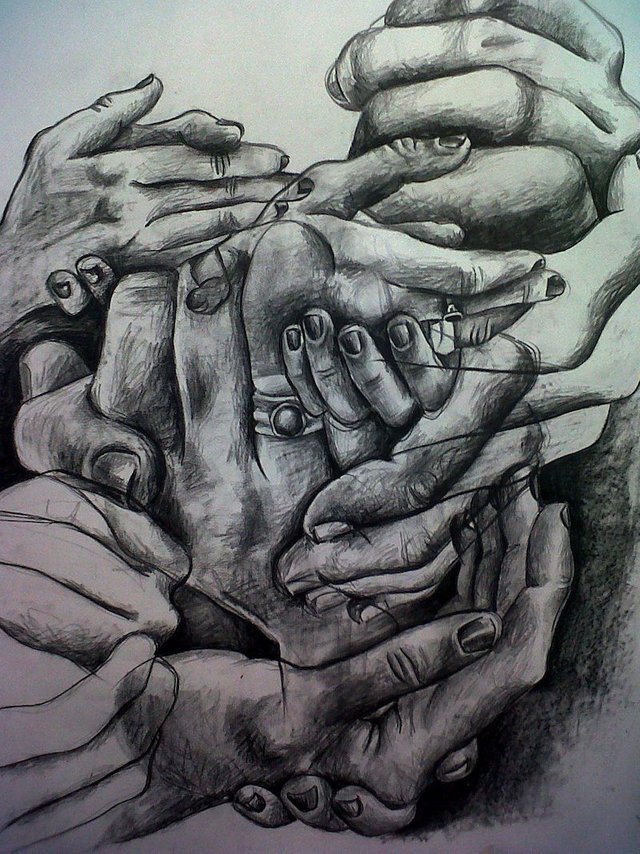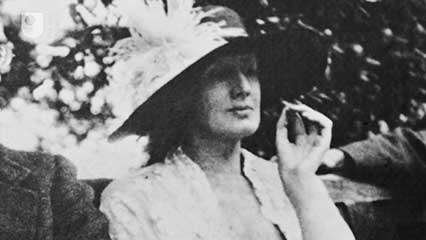Virginia Woolf - To the Lighthouse analysis

To the Lighthouse is a novel written by Virginia Woolf in 1927. The story centers on members of the Ramsay family and their trips to their holiday home in the Isle of Skye over the course of a decade. The novel tells the story through the use of stream of consciousness of various characters in the novel, which is the method Woolf uses to present their reflections on their memories, feelings, and core beliefs to give the reader different perceptions about who they are. Mrs. Ramsay embraces conventional gender roles as a wife, mother, and hostess to her friends visiting her house. She is a support to her family and friends and believes that marriage and having children constitute the only fitting path to take for a woman.
Lily Briscoe, is a friend of the Ramsay family, Mrs. Ramsay and Lily do not share the same beliefs about the role of women. Lily is an artist. She thinks that a woman can be more than just a wife and/or a mother and wants a career as a painter primarily. Mr. Tansley a friend of the family, believes that women can’t write or paint. Lily’s is hurt by his comment but motivated to prove him wrong. During Lily’s stay with the Ramsay family, Lily begins to paint a portrait of Mrs. Ramsay and her son James and thereby proves that a woman could paint and write since she finishes her painting at the end of the novel. Mrs. Ramsay, however, is willing to care for Lilly only on her own terms, and she believes that the best career for a woman is in fact marrying and having a family “Lily Picture! - one could not take her painting very seriously” (12)
Mrs. Ramsay is, however, more interested in marrying Lily to William Bankes a friend of the family, because Lily is thirty-four and not conventionally attractive “with her Chinese eyes and her puckered-up face, she would never marry.” (12) Mrs. Ramsay’s comment about Lily’s physical appearance supports the practice of objectifying women, reducing them to their looks and their role as merely housewives, an attitude which was at that era conventional.
Woolf herself was a feminist, and she resembles the character of Lily’s in the novel. As a child Woolf’s father didn’t believe in girls going to school which limited Woolf and her sisters from having a conventional education from school; however, they were given access to their father’s library and were encouraged to read and write as children.
Mrs. Ramsay comes to agree with her husband even when his ideas and reactions seem inadequate, again supporting the idea of women being second-class citizens. Mr. Ramsay’s actions are often validated by his wife. Mr. Ramsey needs his wife’s attention and reassurance to feel good about himself and to maintain his role as the head of the family. Mrs. Ramsay, who plays a secondary role as a woman, as other members of the family observe, dismisses his flaws.

James hates his father for denying him the trip to the lighthouse. “as now lean as a knife, narrow as the blade of one, grinning sarcastically, not only with the pleasure of disillusioning his son and casting ridicule upon his wife, who was ten thousand times better in every way than he was (James thought), - what he said was true. It was always true. He was incapable of untruth.” (8) It is the men who sees themselves as protecting the women from being overwhelmed. Mr. Ramsey “liked that men should labour and sweat on the windy beach at night; pitting muscle and brain against the waves and the wind; he liked men to work like that, and women to keep house, and sit beside sleeping children indoors, while men were drowned, out there in the storm.” (105) This supports the idea that women were better off taking care of their families rather than having an intellectual career in which they had no faith. Mrs. Ramsay supports her husband’s feelings first and in the process diminishes her own feelings. Because she is always looking out for the people she loves first and putting herself and her feelings second, she denies herself in a way which makes her feel sad and question the world at large. Mrs. Ramsay thus becomes a self-critic “For now she need not think about anybody. She could be herself. And that was what now she often felt the need of – to think; well, not even to think. To be silent. To be alone.” (44)

Mrs. Ramsay’s need to withdraw from the world around her intimates an attraction to death. “She had a sense of being past everything, through everything, out of everything…it’s all come to an end, she thought.” (55) The role she assumes as a wife, mother and conventional woman drains her of vitality. Mr. Ramsay could not come to help of his wife. He sees her troubled but can’t help her. “She was aloof from him now in her beauty, in her sadness…He could not reach her, he could do nothing to help her.” (46) When it comes to connecting with his wife and supporting her, Mr. Ramsay just looks at her “beauty” and “her sadness” without even attempting to help. She was on her own. This shows the dynamic of their relationships and the fear perhaps of Mr. Ramsay in connecting deeply with his wife emotionally. Mrs. Ramsay is uncomfortable telling her husband she loves him, but he knows it because she would agree with him.
The novel deals with a multiplicity of perspectives, visual and emotional. “For nothing was simply one thing” (155) every thought the characters have of each other and themselves is directly connected with one character, reflecting their own struggles and revealing their own flaws and hopes.

"Women have served all these centuries as looking-glasses possessing the magic and delicious power of reflecting the figure of man at twice its natural size."
Virginia Woolf (1882-1941)
Hulton Archive/Getty Images. Victorian family at the dinner table, circa 1850. 2018
The Lighthouse, art by Shadwell Opera. 2018
Weighting Scale Sketch, 2015
Woolf, Virginia. To the Lighthouse. New York: Houghton Mifflin Harcourt, 1981. (e-book) (1 – 201)